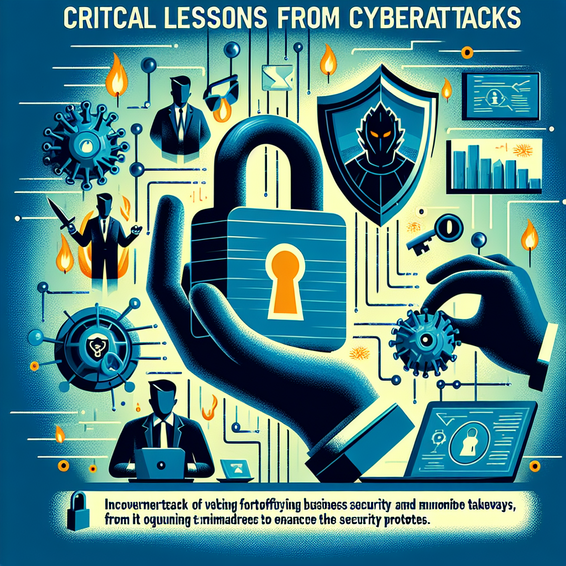Cyberattacks are a reality for every organization—large or small. We’ve seen damage that extends far beyond lost data or a few hours of downtime. It has a tangible effect on your company’s bottom line, reputation, and future security posture. Understanding how these attacks unfold and the mistakes businesses make is the first step toward building real resilience in modern IT environments.
Key Lessons Learned: Business and Industry Impact
Every high-profile breach or ransomware story you hear in the news pulls back the curtain on critical security gaps—usually ones that could have been fixed. The core lesson is clear: Security isn’t a project with an end date, it’s a process that needs continuous buy-in from leadership and boots-on-the-ground from IT. These events show us just how interconnected business risk, compliance, and security really are.
- Financial Losses: From downtime to ransom payments to regulatory fines, unprepared companies pay steep costs that affect all stakeholders.
- Trust and Brand Reputation: Even a single breach can destroy years of trust with customers and partners—recovery takes much longer than response.
- Escalating Regulations: Laws and rules around data protection keep tightening, raising the stakes for IT and business alignment.
The IT industry as a whole is shifting from pure prevention to a balanced approach that includes rapid detection and effective response. Organizations that treat security as a living, evolving discipline consistently weather attacks with less disruption and faster recovery. For more on this shift, check out our article on Building a Cyber-Resilient IT Environment.
Analysis: Why Are We Still Vulnerable?
So why do breaches still happen, even in organizations that invest in security? The reasons are usually mundane: patching delays, siloed teams, access left open longer than necessary, or simple user mistakes. Threat actors know where to look. They’re patient, and they take advantage of overlooked entry points—sometimes for months before striking.
- Outdated or unpatched systems stay vulnerable, often because business priorities push upgrades down the road.
- Critical accounts without passkey or 2FA protections are a favorite for attackers using phishing, brute force, or malware.
- Lack of tested backups means a simple ransomware attack can halt business for days, not hours. Read our insights on backup strategy for recovery best practices.
Security teams need better support and deeper integration into business processes. Building a culture where employees actually care about cyber hygiene remains a challenge, but it’s one that can’t be solved with tools alone. For a closer look at these cultural changes, our post on the real-world cost of cyberattacks is essential reading.
What IT Professionals Should Do: Tactics and Solutions
There’s no magic software or all-in-one service that fixes every security problem. Real protection is about reducing complexity, using layered controls, and testing your defenses regularly. Here’s how to start reducing risk, improving uptime, and lowering the cost of security incidents.
- Enforce strong authentication everywhere: Use passkey and 2FA for admin, finance, and user accounts. Disable unused accounts and audit access regularly.
- Automate and test your backups: Make sure your backup system covers all critical workloads and allows for rapid, granular recovery.
- Deploy endpoint detection and response (EDR): Modern EDR solutions powered by AI provide better visibility and rapid remediation when threats emerge. Detailed reviews of these tools live in our AI in Security category.
- Train users continuously: Make security awareness part of your onboarding and regular training cycle. Users are your first and last line of defense.
- Adopt a zero-trust approach: Treat every device, user, and system as untrusted by default on your network. For network segmentation tips and best practices, see our Networking guides.
The best security investment you can make is a robust, well-practiced incident response plan. Run simulated incidents so your team knows what action to take. Build relationships with third-party experts before trouble starts, not during the chaos.
Remember, the technology landscape evolves quickly, and so do attackers. Stay proactive, keep learning, and don’t let today’s protection become tomorrow’s risk. Check related topics like cloud security mishaps for more tips on forward-thinking defense.
Final Thoughts
The smartest IT teams are relentless about the basics and quick to adapt. There’s no shortcut to a resilient posture: it comes from hard lessons, strong processes, and honest evaluation of your real risks. Don’t wait for the next headline—start strengthening your defenses today, and your organization will be far better off for it.
